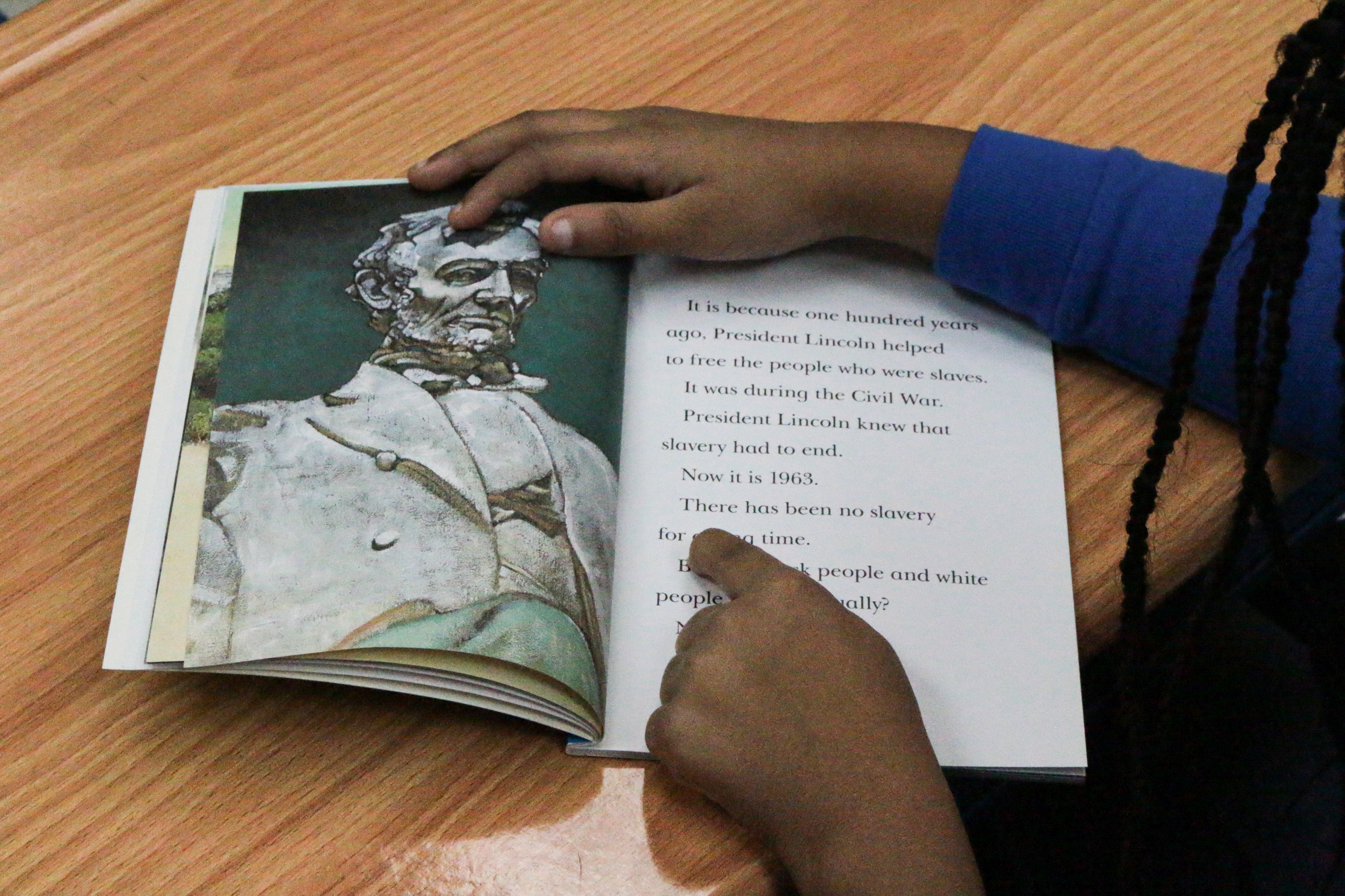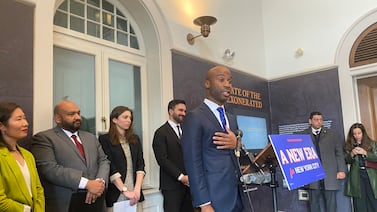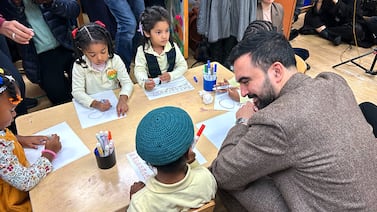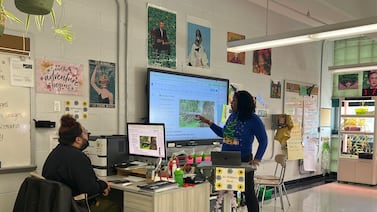Sign up for Chalkbeat New York’s free daily newsletter to get essential news about NYC’s public schools delivered to your inbox.
Ruby Miller, a Brooklyn mom, was optimistic when the city announced plans two years ago to shake up its approach to reading instruction.
But despite Mayor Eric Adams’ signature literacy overhaul known as NYC Reads, which requires all elementary schools to use one of three curriculums, Miller’s 8-year-old daughter has struggled.
“She’ll read something [and] you’ll ask her, ‘Who was the main character here?,’ and she still seems kind of lost,” Miller said. “As far as the comprehension portion of things, I don’t feel like she has improved.”
At Miller’s request, her daughter will repeat the third grade next year and is transferring to a new public school geared toward students with reading challenges.
Now, city officials are rolling out more aggressive plans to catch up students like Miller’s daughter, requiring schools to intervene when students slip behind their peers in reading.
Schools have long provided targeted support for students who are behind academically, though city officials said that quality control and training has long been scattershot.
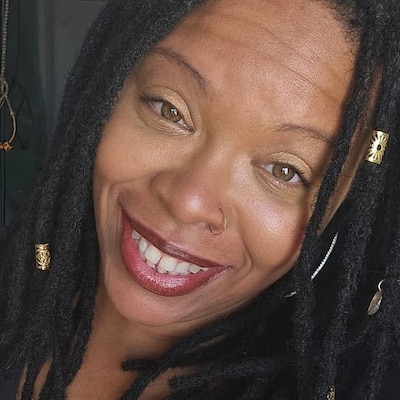
Beginning next school year, all of the city’s public schools — from elementary to high school — must pick from a list of at least nine city-approved intervention programs designed to help struggling readers, according to documents obtained by Chalkbeat. The city hopes “all NYC students become thriving readers and writers by 2035,” the document states. (The full list appears at the end of this story.)
“Gett[ing] really good at catching students up [is] the next New York City Reads and Solves challenge that we are taking on in a big way,” First Deputy Chancellor Dan Weisberg said in an interview, referring to the city’s reading and math curriculum overhauls.
First literacy mandate to directly affect high schools
Intervention programs can involve a range of approaches. In elementary schools, for example, teachers may pull students into small groups to go over phonics concepts from earlier grade levels to reinforce the relationships between sounds and letters. In high school, some campuses use online platforms to help build vocabulary and comprehension skills.
The push to standardize interventions represents one of the first literacy initiatives under Adams that will directly affect high schools. Many older students lack basic reading skills, and experts have long warned that any comprehensive approach to addressing literacy gaps must include high schools.
A subset of schools, including campuses that were in the first phase of the reading curriculum mandate and some middle schools that are also making curriculum changes, will face additional expectations about how often they work with struggling students as part of a pilot program.
Based on a slew of assessments, including reading screeners students typically take three times a year, those schools will be expected to deliver struggling readers extra instruction four to five times a week, according to a document shared with educators that was obtained by Chalkbeat. Students should be re-evaluated every six to eight weeks to determine if they continue to need extra help.
Principals welcome focus on struggling readers, raise logistical questions
Some literacy experts praised the city’s focus on students who are behind and emphasized that training will be an essential ingredient to the initiative’s success.
“It’s one thing to select reading intervention programs, and it’s another thing to make sure you have highly trained reading interventionists,” said Katie Pace Miles, a literacy expert at Brooklyn College who has trained reading teachers and launched a tutoring program.
Still, it’s unclear how significant the changes will be on many campuses. City officials did not say how many schools already use intervention programs that are on the approved list, noting they are surveying schools about their current programs. Officials did not respond to a question about whether the cost of switching to a new program would come out of individual school budgets or how much funding the city is committing to the effort.
Principals largely applauded the focus on struggling readers. Still, some wondered if layering on additional programs is the best approach.
One principal worried that it could overwhelm educators who are already dealing with other curriculum shifts. The principal said reviewing material using their existing curriculums and phonics programs was sufficient.
Others were reserving judgement until more details became available while expressing some concern about how it would fit into their existing schedules.
“It’s a logistical question of who is working with those kids if they’re being pulled out of class” to complete intervention programs, said a Brooklyn high school principal who spoke on condition of anonymity because they weren’t authorized to comment publicly.
Educators also raised questions about how city officials decided which intervention programs to approve. A department spokesperson said only that the process was comprehensive and officials used a rubric to make decisions, but did not provide specifics.
Katharine Debenedictis, the longtime principal of P.S. 198 in Manhattan, said her local district has been encouraging schools to beef up their intervention program for years. The latest mandate does not feel like a major shift, she said, as her school already uses programs on the approved list.
Her school already sets aside three intervention periods a week for reading and math where students get more individualized help. More accelerated students might read independently or play an academic-focused game during that time.
“I feel like the public school system is more clear on expectations for literacy instruction now than I’ve ever seen before,” she said.
Still, she acknowledged that making time for intervention means that every minute of each period must have a purpose, which can mean less time for other activities.
“My most skilled teachers are the ones that don’t allow things like community building, social emotional learning [and] joy to leave the classroom because there doesn’t feel like there’s as much time specifically carved out for that,” Debenedictis said. “Balancing all the priorities is definitely the thing that I think we’re all grappling with the most.”
Here is the full list of approved intervention programs, according to a document shared with educators.
- S.P.I.R.E. Foundations: Sounds Sensible
- S.P.I.R.E.
- Phonics for Reading
- REWARDS Intermediate
- Rewards Secondary/REWARDS Plus
- STARI
- Wilson Reading System
- Just Words
- Aprendo Leyendo (for use in dual language classrooms)
Alex Zimmerman is a reporter for Chalkbeat New York, covering NYC public schools. Contact Alex atazimmerman@chalkbeat.org.

